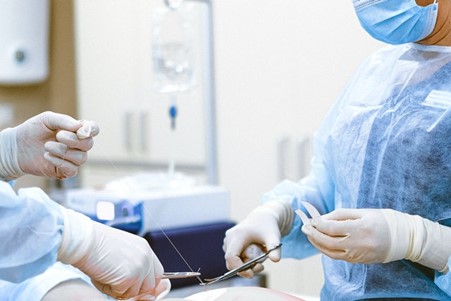
Surgeons are often viewed as an elite tier of doctors renowned for their steady hands, surly dispositions, and eyes for detail. Unlike other fields of medicine, though, surgeons cannot practice their craft by passively studying books or speaking with patients. They must actively hone their skills into an art form. In the following article, John A. Macoviak answers the question: how exactly do surgeons practice surgery? “Surgery is not hard to do, its hard to get to do” said one once famous then infamous surgeon who brutalized trainees. “If the resident isn’t in the inner circle they are often simply worked to exhaustion assisting, taking night calls, rarely being allowed to do any of the procedures”. The theory is the Program Directors only count on 1 in 10 rising to the top preferable from wealthy stock. The others are needed to run the ship but are cut off from honing skills especially if they deviate accidentally or by their genetic back grounds in any way from the normal expected servitude. That is referred to as pyramid programs whether formal or clandestine.”
In this post, we’ll explore how medical students slowly train to become surgeons and discuss how they practice cutting into bodies without harming patients. We’ll also touch on the role of technology in modern surgery and how it has allowed surgeons to become even more skilled at their jobs.
How Students Transform into Surgeons
The first step in becoming a surgeon is, of course, to attend medical school. During their time in medical school, students will take classes on human anatomy and physiology. They will also learn about the different surgical procedures they’ll be expected to perform but the majority of their time will be spent in the classroom, not in an operating theater.
After medical school, surgeons-in-training will complete a residency program. This is where they will finally get some hands-on experience in the operating room. During their residency, they will work closely with experienced surgeons and learn how to perform different types of surgeries. They will also learn how to handle different types of medical emergencies.
After completing their residency, surgeons will take a series of exams to become certified by the American Board of Surgery. Once they are certified, they can finally start practicing surgery on their own.
Of course, becoming a surgeon is not just about acquiring the necessary skills. It is also about having the right mindset. Surgeons need to be able to think quickly and make decisions under pressure. They also need to have a high tolerance for stress. So, how can surgeons practice and hone their skills without performing a real surgery?
Cadavers
While training in medical school, most students learn to perform surgeries by operating on a cadaver. This gives them hands-on experience with a real human body, allowing them to see real organs and tissues and learn to implement different surgical procedures. Yet, as technology has advanced, most med schools have acknowledged the limitations of using cadavers:
- Cadavers are often expensive due to a limited supply.
- Cadaver-based skills training doesn’t help surgeons learn to identify or repair bleeds or damage to blood vessels.
- Cadavers do not show signs of life, so students cannot learn to assess a patient’s condition during surgery.
For these reasons, most students learn to perform surgeries using a blend of methods, not just cadavers.

Simulated Surgeries
As augmented and virtual reality tech has become more advanced, the medical field has quickly adapted to incorporate these features into surgical training programs. Rather than relying entirely on cadaver surgeries, many medical schools are now turning to virtual reality (VR) simulations as a way to provide students with more realistic training experiences.
VR simulations can be used to create realistic 3D models of human anatomy, which can be used to teach students about specific organs and tissues. In addition, VR simulations can be used to create realistic surgical scenarios, allowing students to practice different procedures on virtual patients.
There are a number of different VR platforms that are being developed for use in medical education, but the two most promising platforms are Osso VR and the Oculus Right. Oculus Rift is a VR headset that can be paired with software developed through a joint effort between Johnson & Johnson and Osso VR. It includes a number of different medical simulations, including heart surgeries and childbirth simulators.
Baptism by Fire
Once surgeons leave medical school and finish their residencies, they’re unlikely to ever practice on a cadaver or in a VR simulation again. Instead, they’ll gain all of their experience by operating on real patients. This is why it’s essential that surgeons gain as much simulated experience as possible before they graduate.
If a surgeon makes a mistake during a real surgery, it could have dire consequences for the patient. At the very least, they could put themselves at risk of a malpractice suit. Nonetheless, they call medicine a practice for a reason. Every time a surgeon picks up a scalpel, they further hone their well-tempered skills into an art form.
Final Thoughts
Surgeons spend many years developing the skills and knowledge needed to operate on real patients. By practicing on donated cadavers and in VR simulations, surgeons progressively learn to perform complex surgeries that could kill their patients. After graduating and finishing a residency, surgeons then continue to practice their skills every time they enter the operating room.